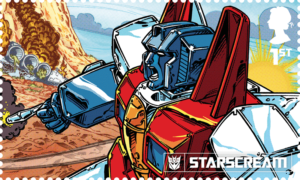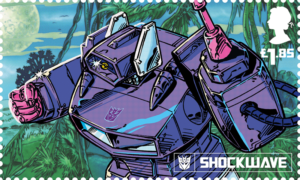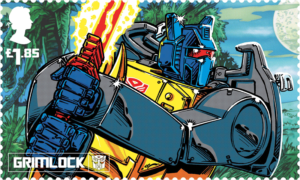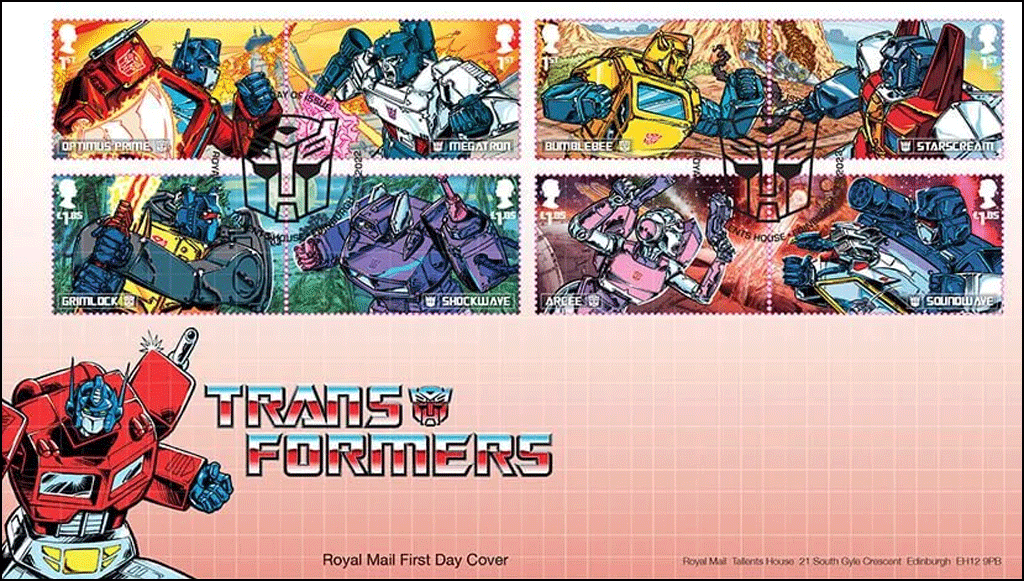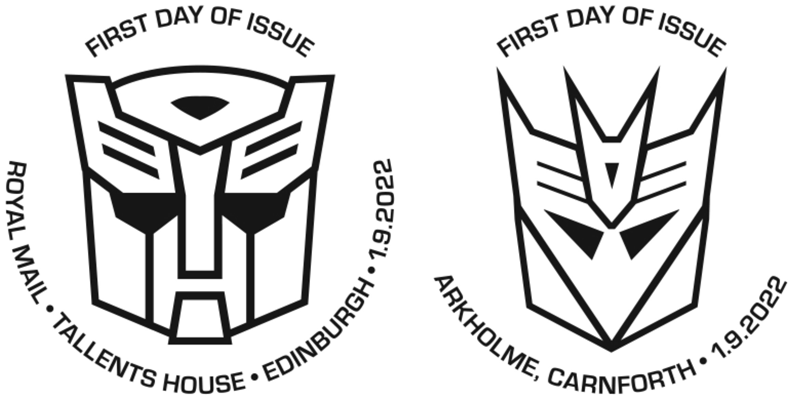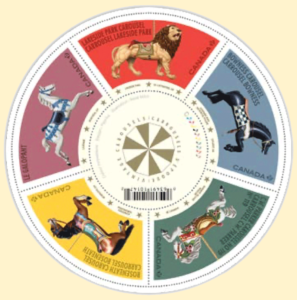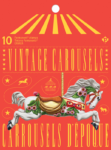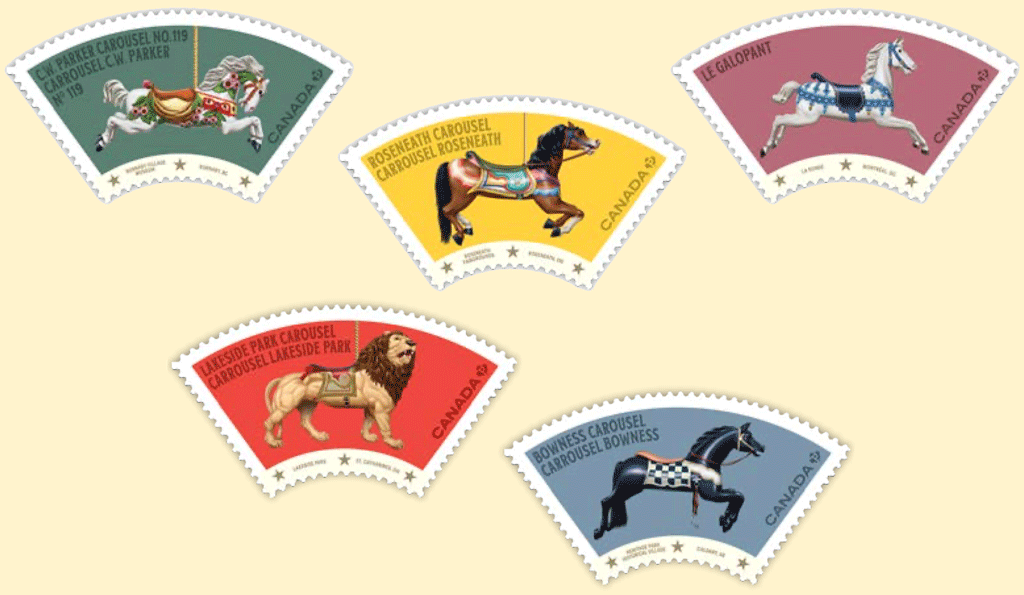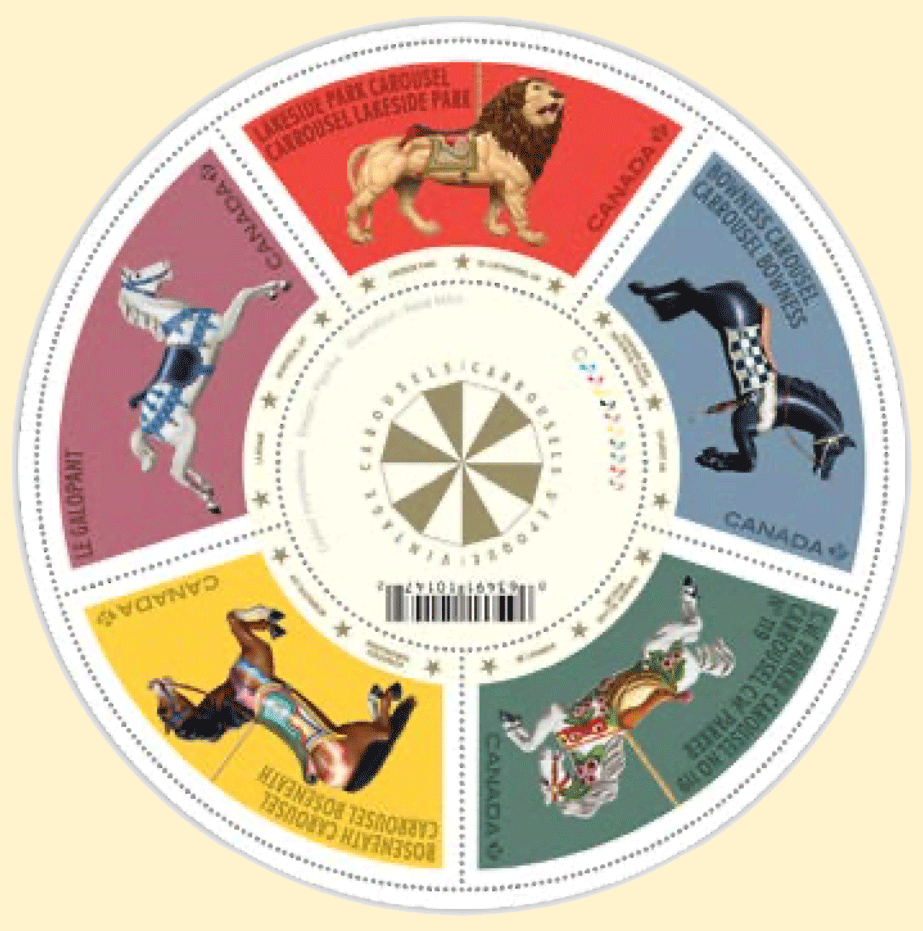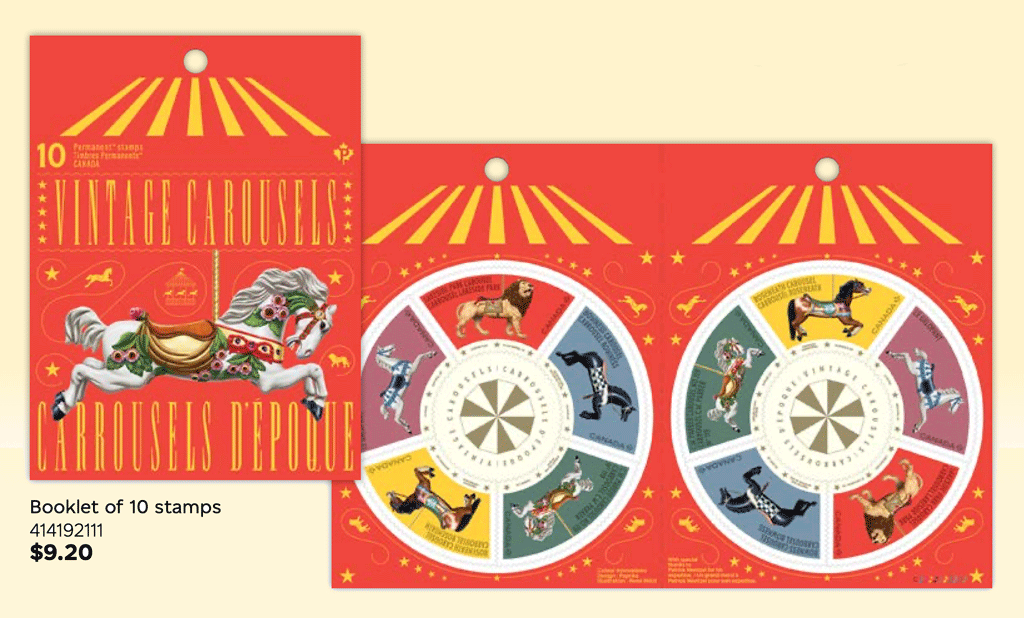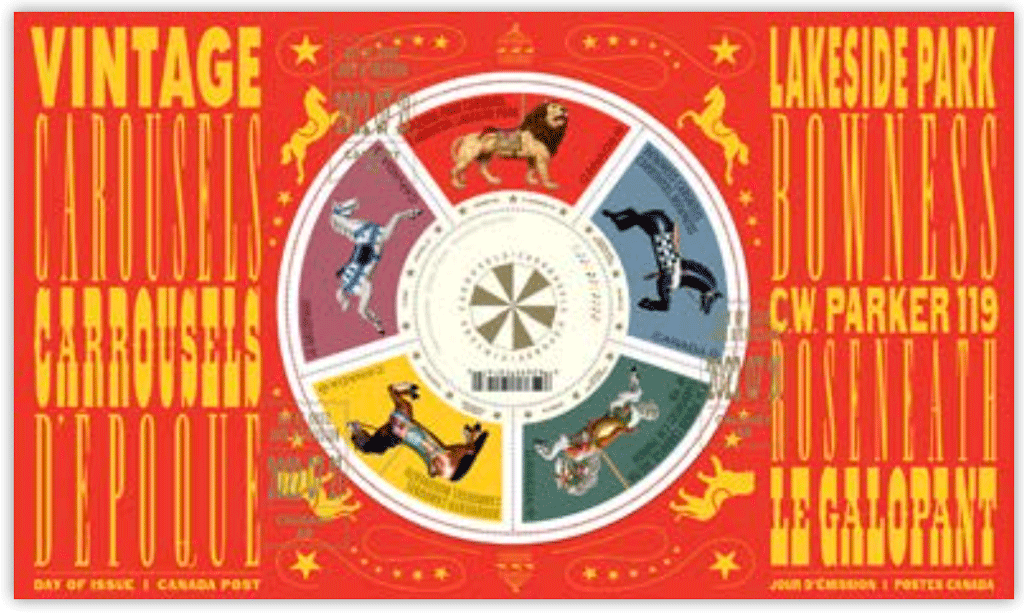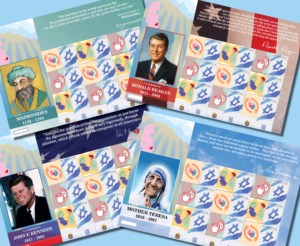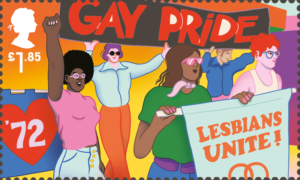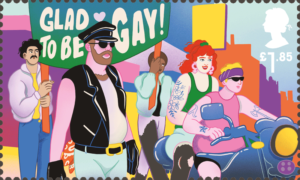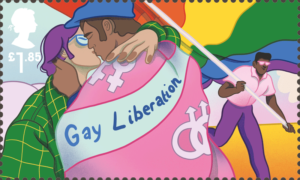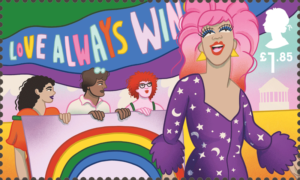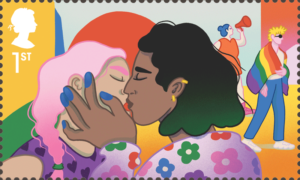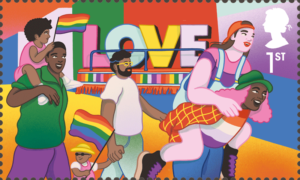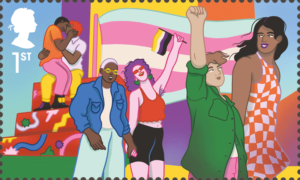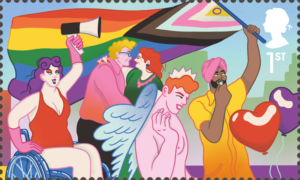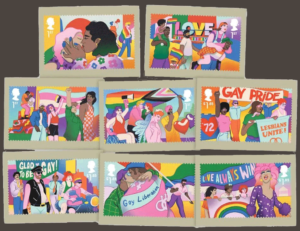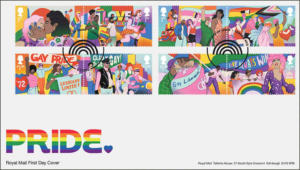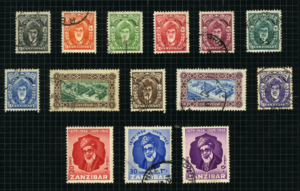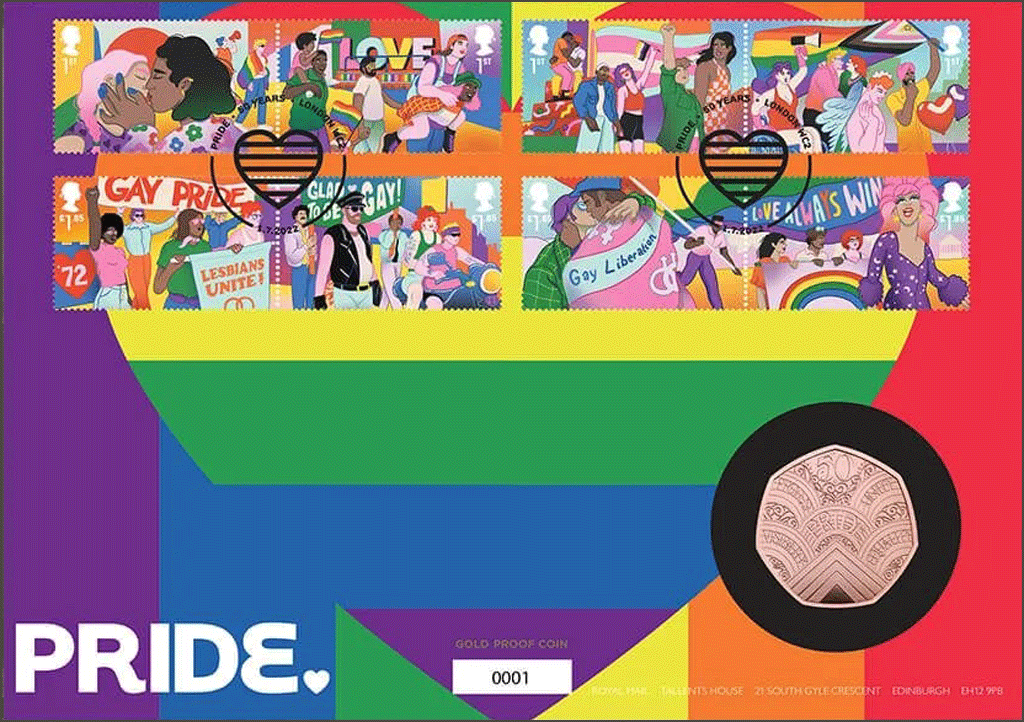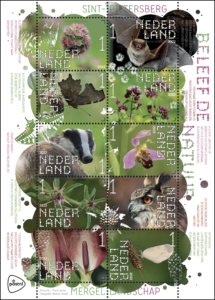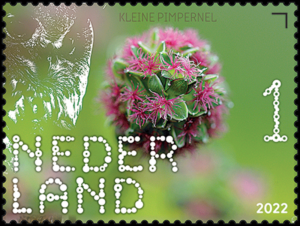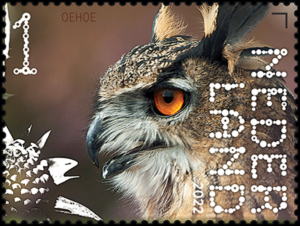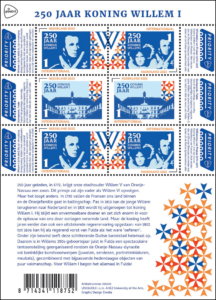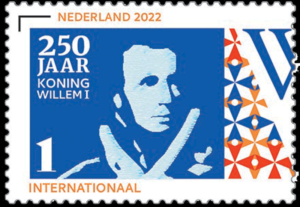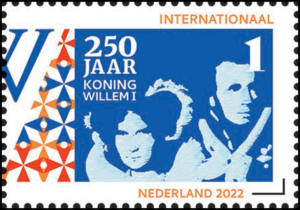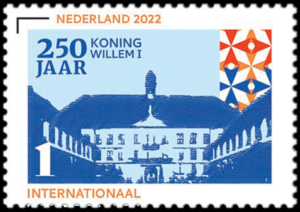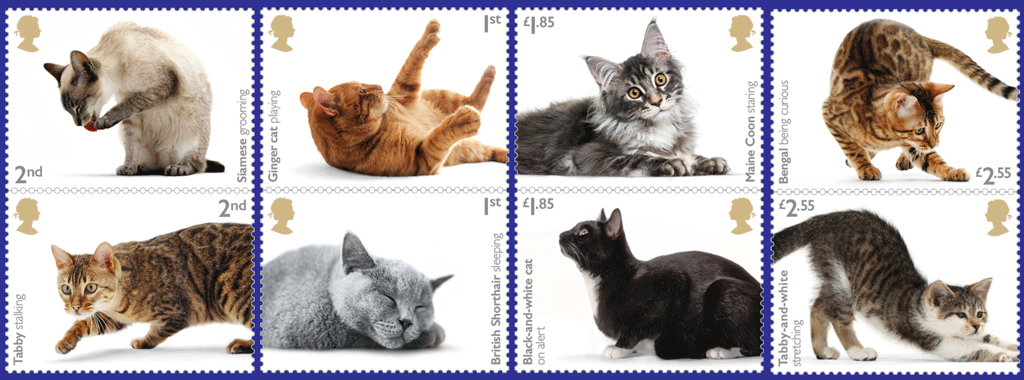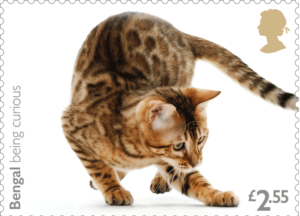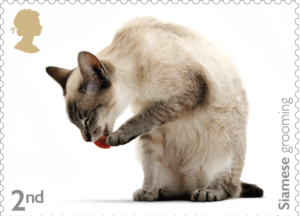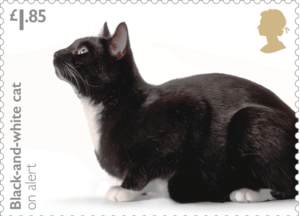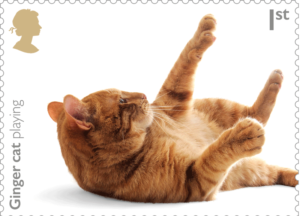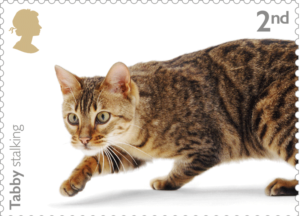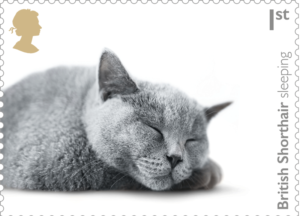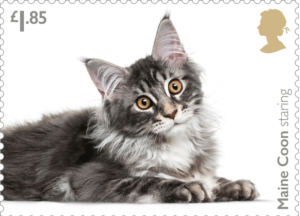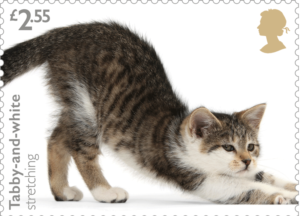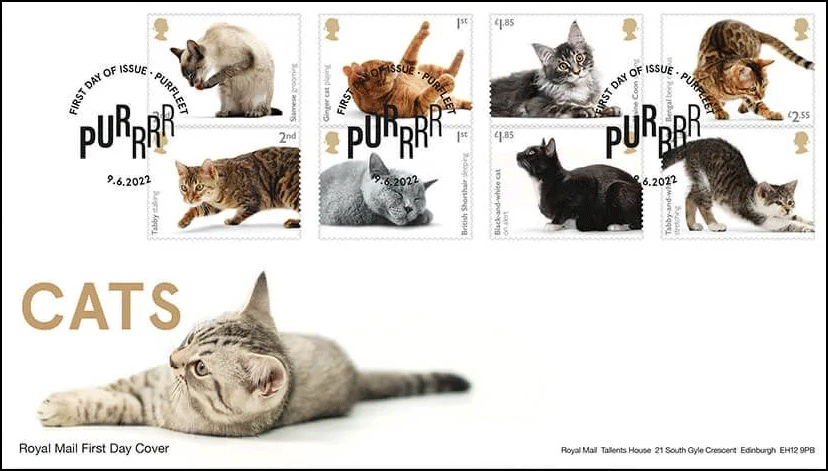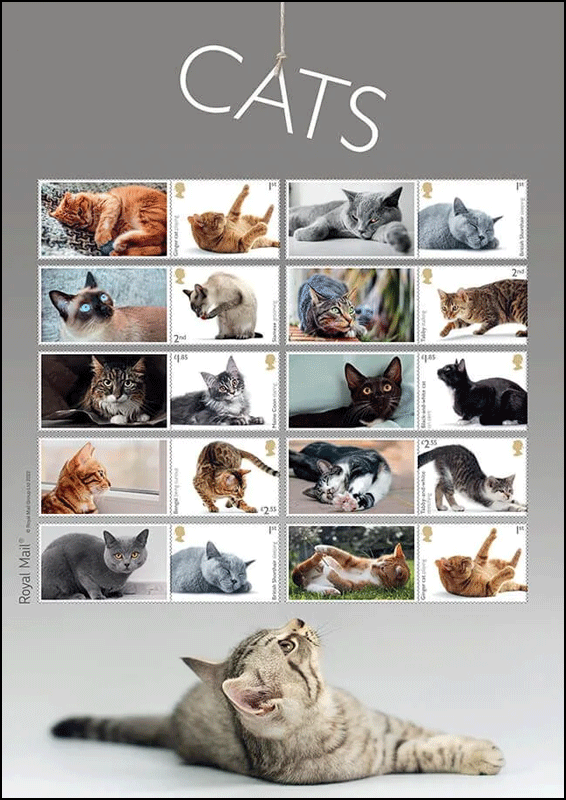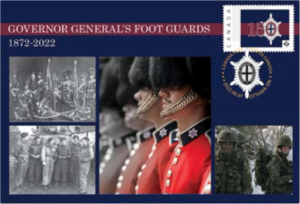[from a press release] [click on any of the pictures for larger versions]
Typically Dutch – Football (“Voetbal”)
Date of issue: 15 August 2022
Appearance: sheet of six stamps in six identical designs
Item number: 420762
Design: Claire Bedon and Edwin van Praet (Total Design), Amsterdam
This issue is the fifth and last in this year’s Typically Dutch series. In 2022, the multi-annual series is dedicated to five sports in which the Dutch excel. The six identical postage 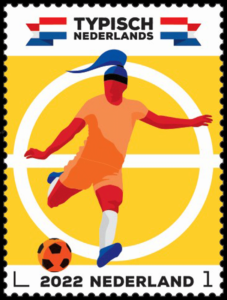 stamps will be marked ‘Nederland 1’, the denomination for items weighing up to 20g destined for the Netherlands. The Typically Dutch – football issue was designed by graphic designer Clair Bedon and creative director Edwin van Praet from Total Design in Amsterdam. Earlier this year, stamps featuring ice skating (3 January), hockey (21 March), cycling (4 April) and sailing (9 May) were published as part of this series.
stamps will be marked ‘Nederland 1’, the denomination for items weighing up to 20g destined for the Netherlands. The Typically Dutch – football issue was designed by graphic designer Clair Bedon and creative director Edwin van Praet from Total Design in Amsterdam. Earlier this year, stamps featuring ice skating (3 January), hockey (21 March), cycling (4 April) and sailing (9 May) were published as part of this series.
With over 1.2 million members, Royal Dutch Football Association (KNVB) is the largest sports association in the Netherlands. While the number of men’s footballers remains stable, women’s football has been on the rise for years, with over 160,000 members. Football in the Netherlands has a long history, with the founding of the first football club in 1879: the Haarlemsche Football Club (HFC). One of the founders, Pim Mulier, established the Royal 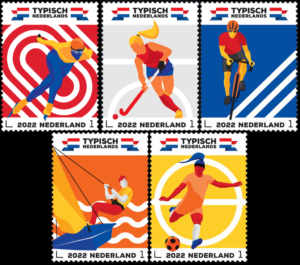 Dutch Football Association (NVAB) ten years later. In 1895, athletics took its own course and in 1929, the football association received the designation ‘Royal’. This marked the birth of the name KNVB. In 1971, the Dutch Women’s Football Association (NDVB) merged into the KNVB.
Dutch Football Association (NVAB) ten years later. In 1895, athletics took its own course and in 1929, the football association received the designation ‘Royal’. This marked the birth of the name KNVB. In 1971, the Dutch Women’s Football Association (NDVB) merged into the KNVB.
The Dutch men’s team played its very first international match on 30 April 1905 in and against Belgium. Club-level women’s football in the Netherlands began in 1955. A year later, the Dutch women’s team played its first international match. When it comes to football, the Netherlands has one of the best teams in the world. Based on the situation in June 2022, FIFA (the world football association) positioned the women’s national team in fourth place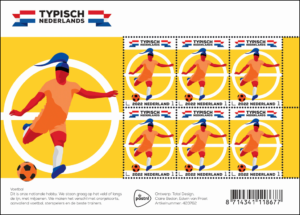 in the FIFA rankings, and the men’s team in eighth place. The women became European champions in 2017 and vice-world champions in 2019. The men became European champions in 1988 and vice-world champions in 1974, 1978 and 2010. The basis for the Dutch school with the 4-3-3 formation was laid by Ernst Happel from Feyenoord and Rinus Michels from Ajax and the Dutch national team at the end of the 1960s. The most famous national coach in women’s football is Sarina Wiegman, who managed the Dutch women’s team from 2017 to 2021. The names of star players like Marco van
in the FIFA rankings, and the men’s team in eighth place. The women became European champions in 2017 and vice-world champions in 2019. The men became European champions in 1988 and vice-world champions in 1974, 1978 and 2010. The basis for the Dutch school with the 4-3-3 formation was laid by Ernst Happel from Feyenoord and Rinus Michels from Ajax and the Dutch national team at the end of the 1960s. The most famous national coach in women’s football is Sarina Wiegman, who managed the Dutch women’s team from 2017 to 2021. The names of star players like Marco van 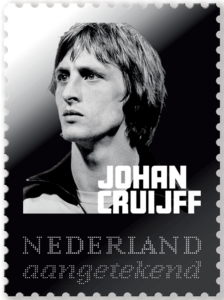 Basten, Johan Cruyff, Lieke Martens and Vivian Miedema are known across the world. [PostNL issued a stamp for Cruyff in 2017, one year after his death.]
Basten, Johan Cruyff, Lieke Martens and Vivian Miedema are known across the world. [PostNL issued a stamp for Cruyff in 2017, one year after his death.]
The stamps featured on the Typically Dutch – Football stamp sheet show an illustration of a footballer in action. With her eyes on the ball, the player moves their right leg backwards to prepare for a shot. In the background, you see a round shape intersected by a horizontal line, symbolising the centre circle of a football pitch. The bottom of each stamp has a white strip containing the sorting hook, the year 2022, the country (Netherlands) and the denomination (1). Both the ball and the heel of the left shoe run into this strip slightly. The same is happening with the footballer’s ponytail in the white strip at the top. The logo for the Typically Dutch series is printed above each stamp, with a folded Dutch banner on the left and right. The picture is repeated in enlarged form on the edge of the sheet. The dominant colour yellow continues on the two tabs on the right. The Typically Dutch logo appears once more on the top edge of the sheet, while the bottom edge features a short explanatory text.
 According to graphic designer Claire Bedon, the sportsman on the stamp epitomises a professional footballer – someone who runs up and shoots the ball, perhaps taking a free kick or penalty shoot. ‘She radiates strength and is relaxed at the same time. Her strength can be seen in the upper legs and her relaxation is shown in her open hands and the balance she seeks by spreading her arms. It’s obvious that she knows exactly what she’s doing. She has already visualised the shot, and she is about to shoot and score.
According to graphic designer Claire Bedon, the sportsman on the stamp epitomises a professional footballer – someone who runs up and shoots the ball, perhaps taking a free kick or penalty shoot. ‘She radiates strength and is relaxed at the same time. Her strength can be seen in the upper legs and her relaxation is shown in her open hands and the balance she seeks by spreading her arms. It’s obvious that she knows exactly what she’s doing. She has already visualised the shot, and she is about to shoot and score.
This issue is the last in this year’s Typically Dutch series.
Technical Details:
Postage stamp dimensions: 30 x 40 mm:
Sheet size: 170 x 122 mm
Paper: normal with phosphor print
Gum: gummed
Printing technique: offset
Printing colours: cyan, magenta, yellow, black and orange
Print run: 75,000 sheets
Appearance: sheet of 6 stamps in 6 identical designs
Design: Edwin van Praet and Claire Bedon, Total Design, Amsterdam
Printing company: Cartor Security Printers, Meaucé-La Loupe, France
Item number: 420762
Available on the PostNL webshop.


